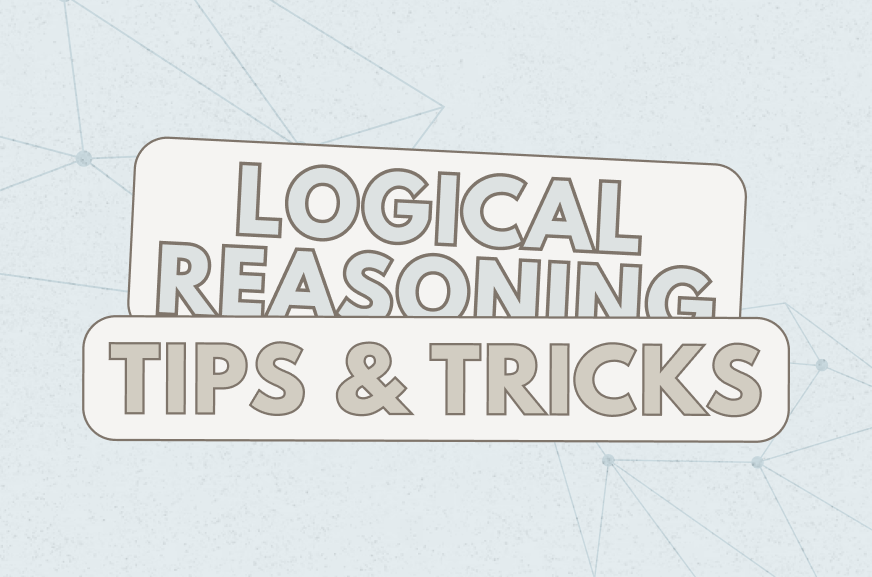or…How I Learned to Stop Worrying and Love the LSAT (Part 2 of 3)
In other articles, I showed you how to answer Logic Games questions and how to prepare for Reading Comprehension. This time, I’ll share the best ways to answer common Logical Reasoning questions.
First, why is it possible to conquer Logical Reasoning and even make it (sometimes) fun?
After doing a few sections of Logical Reasoning, you may feel like nuclear physics is an easier career than law. However, we hear flawed arguments all the time. I’m not talking about the ones you hear from your significant other, your parents, or your kids – I’m talking about advertising.
Imagine yourself reading the following argument on test day, and think about how you’d analyze it.
Stimulus:
“Advertisement: Purell hand sanitizer kills 99% of common disease-causing germs. Therefore, your health is in good hands when you use it.”
A real LSAT question wouldn’t use such a lame pun, but otherwise, I’ve based this on a real Logical Reasoning stimulus.
Purell may want you to believe their product will make you safe. My first question (and yours, too, I hope) is, “What about the other 1% of disease-causing germs (DCG)?” If any germs get us, it’ll probably be those. This leads us to…
5 reasons this advertisement is flawed:
1. The 99% of common DCG Purell kills are the weakest 99%. The other 1% were too strong or difficult to kill. What I really need is a product to fight that 1%.
2. If enough other people buy and use Purell, then I don’t need to worry about those 99% of common DCG. Purell’s customers, and all the other purchasers of antibacterial products are taking care of the problem for me. I can sit back and relax (and be a “free rider”). Others will pay to eliminate the problem for me.
3. The advertisement fails to specify if it kills 99% of all common DCG or 99% of types of common DCG.
4. Is it worth bothering to get a product that kills common DCG? My body’s probably encountered most common DCG – it has antibodies against them. If I’ve made it this far without the sanitizer, I don’t need to worry about them. I need a product to fight uncommon DCG – they may be the greater threat.
5. I’m starting to sound like the paranoid scientist in a bad sci-fi flick, but hear me out on this last point. If everyone starts using a product that kills 99% of the common DCG, the 1% of common DCG will grow in number to replace the ones killed by the sanitizer. We’ll have a growing army of DCG this sanitizer can’t kill.
The previous argument should please health nuts concerned about worst-case scenarios, so here’s one for smokers:
Stimulus:
“Joe developed cancer, and he smoked for many years. Therefore, smoking led to his cancer.”
While this is possible, it’s not certain. Correlation does not prove causation. The argument can be supported by 2 types of information:
1. Dismissers defend against possible alternative explanations.
Examples:
– Joe does not live in LA, a city known for its cancer-causing smog.
– Joe lives in the mountains, where there is little air pollution.
– Joe only eats organic produce, so he is exposed to very few pesticides.
– Joe does not work in a nuclear power plant.
2. Supporters strengthen the evidence or provide new evidence.
Examples:
– Studies show smokers have much higher cancer rates than the general public.
– Laboratory tests show cigarettes contain more carcinogens than anything else, ever.
– Smoking is the only cause of cancer.
(The LSAT is unlikely to include statements as extreme as some of the ones above, but see the sample question stem below. The question says “if true,” so the answer choice can be unrealistic. Put aside your preconceptions.)
Any of the dismissers and supporters I listed above could be the correct answer choice to the following:
Question stem:
“Which one of the following, if true, would most strengthen the argument?”
You don’t know if you’re dealing with a dismisser or a supporter until you look at the answer choices.
Why? Because the correct answer doesn’t need to be true for the argument to work. It just helps the argument if it is.
When it’s a “Strengthen EXCEPT” question, 4 answer choices strengthen the argument, and 1 does not (it weakens OR has no effect). In these questions, it’s worth trying to predict the strengtheners before looking at the answer choices – this helps you eliminate them more quickly.
If the question were “Which of the following assumptions does the argument depend upon?”, it’s a “necessary assumption” question, which is completely different.
Another example of an argument to illustrate how these question-types differ:
Stimulus:
“Child: Mommy, please let me play outside – I finished all my homework!”
(Argument: “Finish homework -> Play outside”)
Question stem:
“Which one of the following, if true, would most strengthen the argument?”
Dismisser:
“The child has been well-behaved all day.”
Supporter:
“Leading experts argue children need fresh air every day.”
What if it were a principle question? These can function as strengthen questions, depending upon the stem.
Question stem:
“Which one of the following principles, if valid, would most help to justify the argument’s conclusion?”
Principle:
“Children who perform their duties deserve to be rewarded.”

